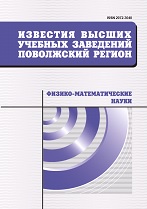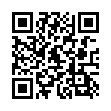|
|
University proceedings. Volga region. Physical and mathematical sciences, 2013, Issue 3, Pages 233–247
(Mi ivpnz406)
|
 |
|
 |
Physics
The photomagnetic effect in a quantum wire with one-dimensional superlattice from zero-radius potentials
V. D. Krevchik, A. V. Razumov, T. A. Gubin
Penza State University, Penza
Abstract:
Background. Photon entrainment effect bears valuable information about the band structure and mechanisms of charge carrier pulse relaxation in semiconductor low-dimensional systems. From the viewpoint of device application, this effect may be used to create laser radiation detectors based on nanostructures that provide wide control capabilities over both band spectrum and impurity states (localized and resonant). The purpose of this paper is a theoretical study of the peculiarities of the effect of photon entrainment of electrons connected with the presence of an impurity band formed by resonant electron states in the field of a regular chain of $D^0$-centers in a quantum wire in the presence of an external longitudinal magnetic field. Materials and methods. The curves of the spectral dependence of the photon entrainment current density in a quantum wire with a regular chain of $D^0$-centers in an external magnetic field are plotted for the case of an InSb quantum wire. To calculate the current density the method the Boltzmann kinetic equation was used. Results. It is shown that with a period decrease in the regular chain of $D^0$-centers in a quantum wire the threshold of photon entrainment effect is shifted to long-wavelength spectrum part due to the growth of the effective electron mass in the impurity band. At the same time the frequency and amplitude of the oscillations of interference nature increases in the spectral dependence of the photon entrainment current density. It is found out that with the increase of external magnetic field oscillations are suppressed due to the impurity band width reduction. It is shown that the dissipative tunneling parameters have a significant impact on the threshold of the photon entrainment effect in a quantum wire. A quantum wire with resonant electron states which is related by tunnels to a bulk semiconductor possesses additional degrees of freedom to control the effect of photon entrainment by varying the dissipative tunneling parameters.
Keywords:
quantum wires, regular chain of $D^0$-centers, impurity resonant electron states, impurity band, external magnetic field, the effect of photon entrainment of electrons.
Citation:
V. D. Krevchik, A. V. Razumov, T. A. Gubin, “The photomagnetic effect in a quantum wire with one-dimensional superlattice from zero-radius potentials”, University proceedings. Volga region. Physical and mathematical sciences, 2013, no. 3, 233–247
Linking options:
https://www.mathnet.ru/eng/ivpnz406 https://www.mathnet.ru/eng/ivpnz/y2013/i3/p233
|

| Statistics & downloads: |
| Abstract page: | 40 | | Full-text PDF : | 14 | | References: | 15 |
|




 Contact us:
Contact us: Terms of Use
Terms of Use
 Registration to the website
Registration to the website Logotypes
Logotypes








 Citation in format
Citation in format 